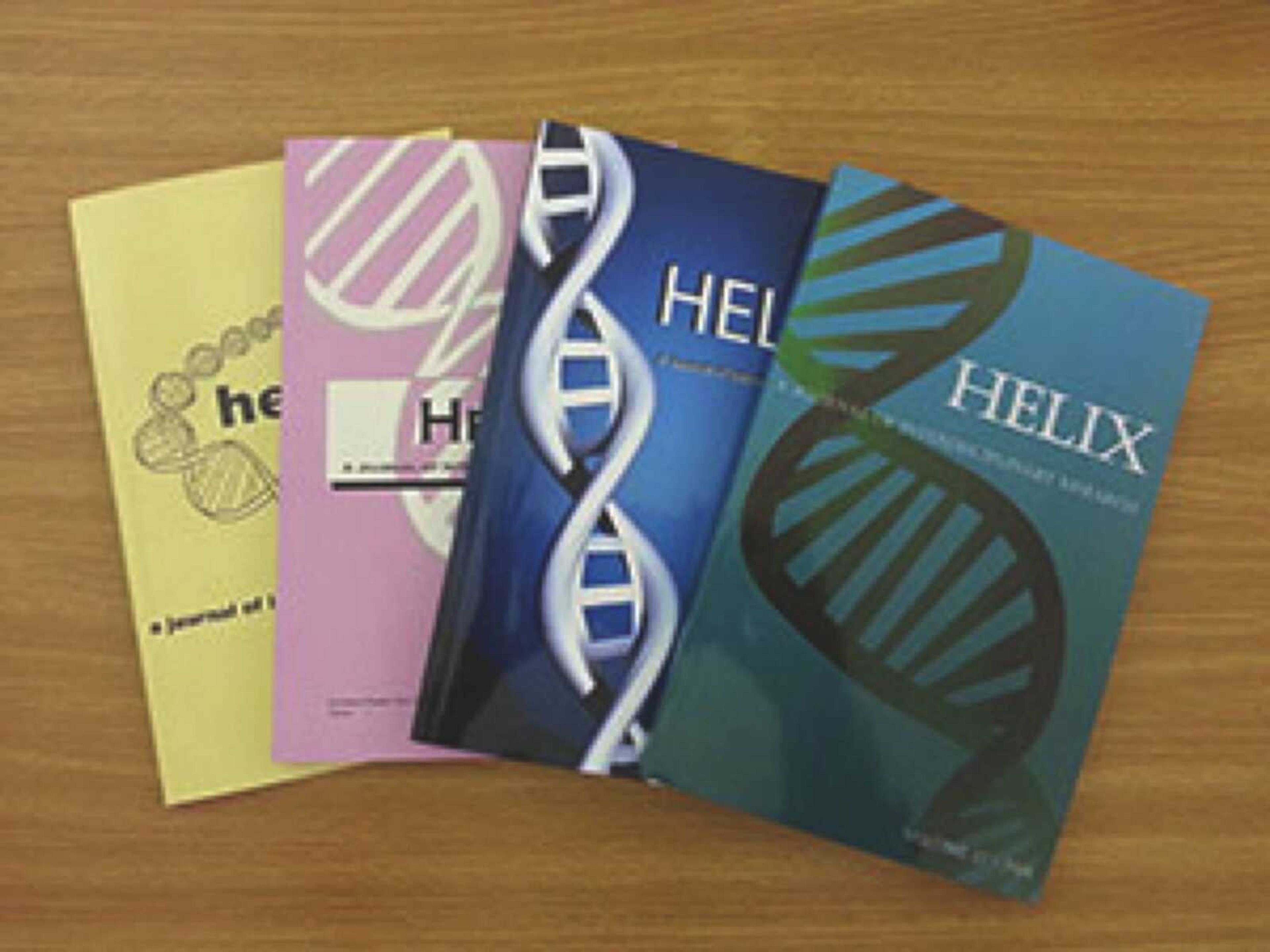Each fall semester at Southeast Missouri State University, the Center for Writing Excellence publishes a collection of student-made research projects called Helix.
The publication is intended to provide students with the opportunity to display their written research and prepare them for submitting professional work. Helix is open to both undergraduates and graduate students for participation. Any work submitted that surpasses the character limit must receive approval by the editors before they are considered. Undergrads must keep their work within the range of 1,000 to 3,000 words, while graduate submissions should be between 3,000 and 5,000 words.
"It branches out into other disciplines," Writing Lab Coordinator Jennifer Weiss said. "You don't have to be in the English department to be a good writer and to have these ideas that need to be shared with other people."
For over a decade, Helix journal has included a variety of student work, ranging from political issues such as human trafficking to sustainability at Southeast. According to administrative assistant and writing associate Marge Phillips said the journal began from an effort made by Southeast professor Dave Reinheimer.
"I have began working with Helix since the beginning," Phillips said. "It started out as a funding for results grant that we got. Dave Reinheimer, the director of the program then, thought it was a good idea to promote some of the research the students did."
To writing associate supervisor Jeremy Thompson, Helix provides a great outlet for students to showcase their work. Whether it is done for a class or in their spare time, Helix is open to anything regarding research.
"It's a way to get publication credit and get used to how it works," Thompson said. We have been doing this since the early 2000's. Next year will be our fourteenth volume."
Each issue features a contest for both graduate and undergraduate students, as well as one for the cover design.
"We run a contest, which has a prize of $75 for each entry level," Thompson said. Each entry needs to be in some kind of style."
Beyond submission, students need to work with the supervisors on getting their editing right, and get the permission for publication.
"The graduate winner last year wrote an analysis of the constant pursuit Wile E. Coyote has with the Road Runner," Thompson said. And another one submitted a study about the strike plates on roller-skates for derbies, and the cost benefit."
Every manuscript submitted for publication is eligible for the contest. Before the winner is declared, every submission is judged in terms of overall strength and use of source material. Two readers are selected from the staff to handle the judging process of each paper. From there, both will begin to discuss whether the entry is worthy of a spot or not.
"We have two readers review each paper," Weiss said. "The authors' names are removed so that there is no chance of bias, and the reader will either approve or reject the submission. If there is a disagreement between the two readers, a third reader is brought into the process as a tiebreaker. The main criterion used to evaluate the submissions is that the paper is a strong representation of the discipline in which the author is writing."
When discussing the future of the Helix journal, Phillips and Weiss hope to improve their promotional material and bolster their submission numbers. To them, encouraging more students to participate can help generate interest. The first goal is to get the word out.
"One of the things we had a problem with is promotion," Phillips said. "Somehow we are not reaching the students to submit their research papers. There was some excitement at first, but over the years it dwindled away."
Weiss said that the Helix's biggest weakness in terms of publicity is its competition. Fellow written publications like Journey magazine and student-run journal Literati.
"We also reach out to faculty and ask them to encourage their students to submit their work. Unfortunately, our publication is blending in with the others."
While the interest may not have been up to par lately, Phillips feels students should submit their work and display what they have accomplished.
"We are hoping this year we will get some of that back," Phillips said. A lot of students research for class, why wouldn't they want to submit their work and get a chance to win money?"
For those interested in contributing to the Helix journal, students can email jfthompson@semo.edu for more information.






